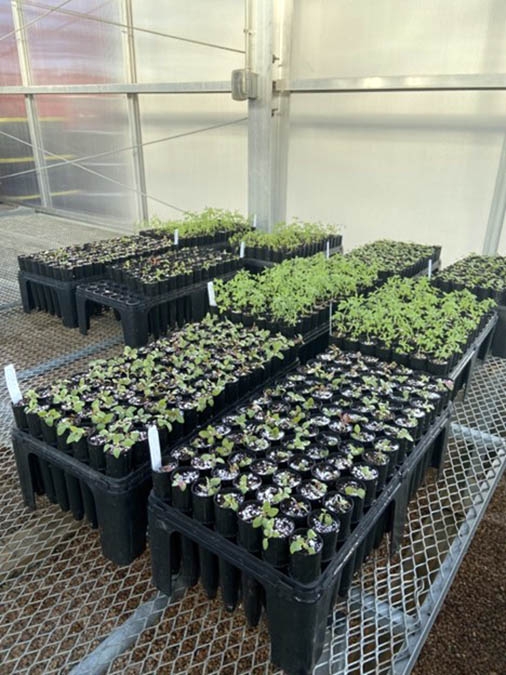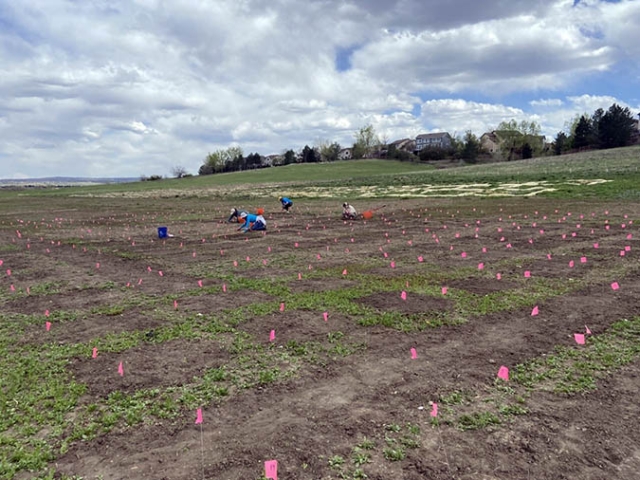Studying Relationships Between Water Limitation and Plant Traits
While walking along a trail in Denver, I appreciated that I had access to nature while within city limits. I noticed large cottonwoods with birds chirping in the branches and delicate pollinators buzzing near milkweed. However, I also realized just how much mowed grass there is in urban green spaces. While this mowed grass offers some benefits such as providing recreation space and mitigating runoff, much of the grass in urban spaces is not utilized to its full potential.
This realization led me to develop my graduate research project. I am currently a master’s student at CU Denver, while also being housed within the Research & Conservation Department at Denver Botanic Gardens. I am fortunate to be able to draw upon resources and knowledge of both entities because of this partnership. My aim is to learn more about plants that could eventually replace the mowed grass in urban green spaces.

Plants were grown from seed in the greenhouse at Chatfield Farms. Many extra seeds were planted to account for attrition.
Replacing unused grass spaces with native plants that have showy flowers can increase biodiversity and decrease maintenance costs. Mowed grass is especially expensive to maintain because of the high amount of water needed to keep the grass green. A hotter and drier future is predicted for Colorado and other semi-arid cities, and this will likely lead to lower irrigation budgets. My research project will provide information on how native flowers perform with increasingly limited water, which can provide insight on plant species that could replace grass as low-water alternatives.
Last fall, I started the process of growing 10 species of wildflowers from seeds, including Penstemon (beardtongue), Cleome (bee plant) and Ipomopsis (gilia) species. While the plants were growing, I set up my plots at Chatfield Farms. Thankfully, I had the help of many volunteers to weed my plots to get them ready for the seedlings. Volunteers also worked hard to help me plant over 450 seedlings! Over the next few months, I will be monitoring these plants as they grow under varying degrees of water stress. I will be collecting data on their survival, performance and plasticity. Growth rate, number of leaves and root to shoot ratio are just a few measurements I will be taking to determine how the plants fare when they receive less water than “ideal.”

Volunteers hard at work weeding the plots to prepare for planting.
Ultimately, my goal is for urban green spaces to contain plants that benefit both the environment and the community, meaning that there is less grass to mow and water, and more flowers for all to enjoy.
This article was contributed by graduate student Brielle Cerep-Funke.
Add new comment